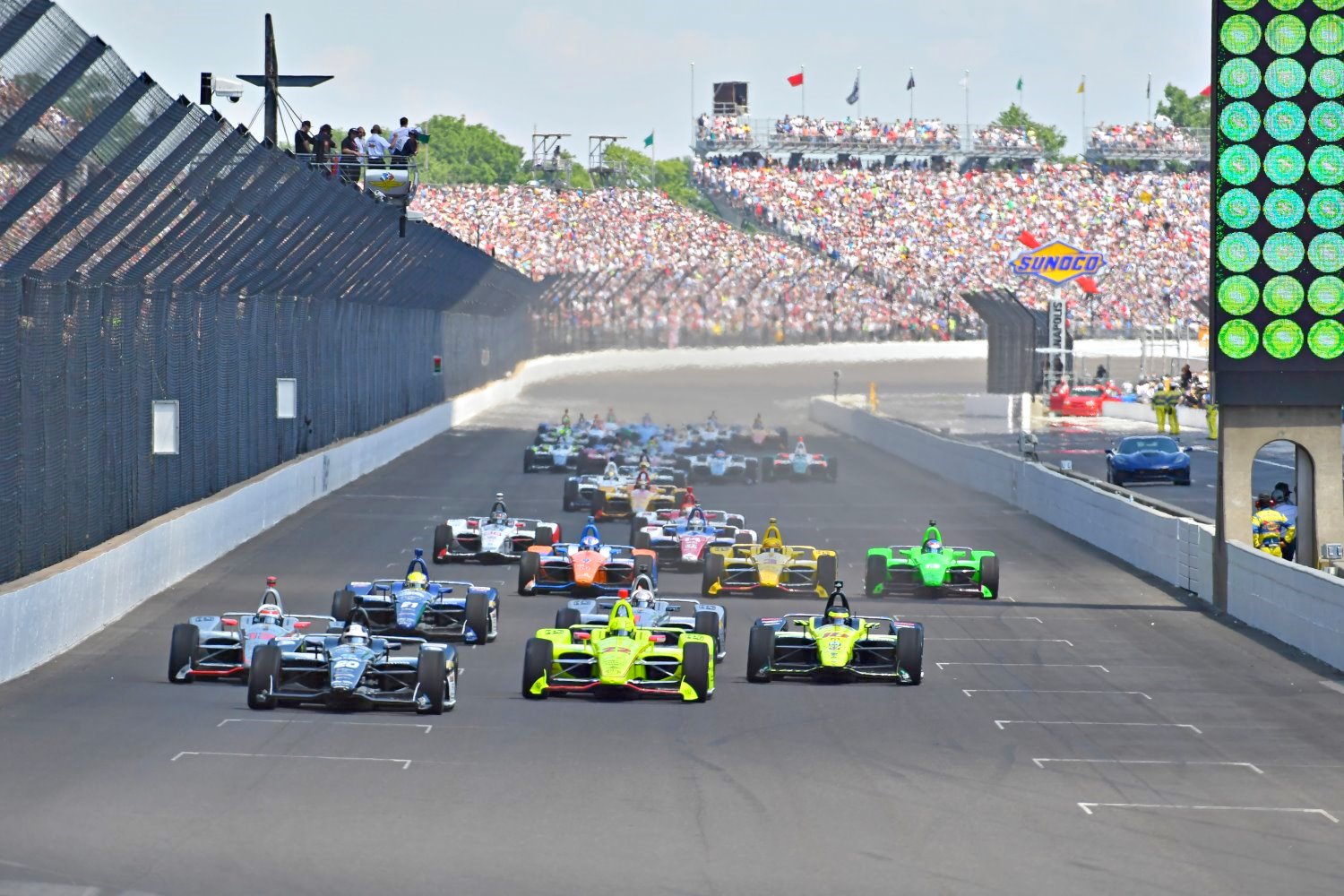IndyCar to switch to guaranteed spots for Indy 500 starting in 2020 (2nd Update)
 |
| A 105% rule should satisfy both sides of this argument |
UPDATE
A reader writes, Dear AutoRacing1.com, Why don't they lock in all the regulars but they must pass the 105% rule. Surely a full-time team can achieve that. There has to be some kind of limit so they have to try to be competitive. Jerry MarneyDear Jerry, That is an excellent compromise suggestion. IndyCar should do it. Mark C.
04/19/19 In posting the solution to this issue that clearly has divided the team owners and the hard core fans, we inadvertently typed lock in the fastest 22 regulars instead of the top 22 regulars in points. It has been corrected below.
 |
| Roger Penske has opened up a can of worms |
04/19/19 NASCAR has had it for years.
Roger Penske wants it for IndyCar.
Chip Ganassi wants it
Michael Andretti wants it.
The three biggest team owners in IndyCar know that the Indy 500 is their crown jewel. But without the regulars who run the entire IndyCar series, there would be no Indy 500. So Penske, Ganassi and Andretti have now come out publicly saying there is the need for full-time entries to have locked-in spots at the Indianapolis 500.
"My feeling is you have to look at the overall health of the series and the strength of the series, and how do we make the series stronger? It’s by bringing in more sponsors," Andretti told IndyStar. "Obviously the Indy 500 is still the Super Bowl, and if a sponsor who has supported the series all year doesn’t make it in the biggest race of the year, it’s a huge blow to the overall health of the series."
Andretti cited the 2011 Indianapolis 500, when Andretti Autosport driver Ryan Hunter-Reay failed to qualify for the race, as a prime example of the potential disasters awaiting teams/drivers who don't make IndyCar's biggest and most important event.
If Andretti hadn't worked out a deal with A.J. Foyt to put Hunter-Reay in another car, long-time sponsor DHL "probably wouldn't be in the sport today," Andretti said. "That’s how important that is."
Andretti is happy that Penske and Ganassi were on the same page and said that IndyCar President Jay Frye supports such a change.
"I know Jay is actually for this, as well," Andretti said. "We still got to work on IndyCar CEO Mark Miles. He’s the one who still wants to keep it the way it is."
But it won't stay the way it is.
The argument is without sponsors you won't have a sport, but without fans you won't have one either
While the fans are against the break from tradition, let's not forget that the Hulman-George family is all about protecting their flock.
Who can forget that to prevent CART teams from cherry-picking the 1996 Indy 500 after he created the IRL, Tony George implemented the "25/8 Rule." It guaranteed 25 of the 33 starting spots would go to IRL entrants, which sent shockwaves through the CART paddock. For those considering a one-off return to Indy, George's 25/8 was a powerful deterrent to entering the Indy 500.
Today there are about 24 full-time IndyCar entrants, give or take. If McLaren comes with a new 2-car team in 2020 that number could go to 26.
That would still leave 7 spots open for the annual fill-ins to try and make the Indy 500.
Not the end of the world as you would still have bumping for those 7 spots to fill the 33-car field, but the rub is a regular could quality slow and still be guaranteed a spot in the race – i.e. it protects the inferior. It was always about the 'fastest' 33.
But in reality the regulars almost always make it on speed anyway. Sure there is the rare year when a big name driver doesn't make it because their car is off the pace, but then the fans of that driver get pissed off because they bought tickets for the race and now their driver won't be in it.
The AR1 Proposed Compromise
Just guarantee a starting spot for the top 22 in points of the regulars, instead of all of them. This would placate the existing team owners for the most part, and it will mostly placate the fans since that would leave 11 spots up for grabs, instead of just 7, to fill the field. It would mean, however, that a regular could still get bumped out of the Indy 500…..as rare as that may be.
Drama has not been part of the Indy 500 qualifications for years because many years there are only 33-cars attempting to qualify anyway. Just in the last two years has bumping returned. While it was horrible for Hinchcliffe that he had to watch the race in 2018, his qualifying miss provided a big lead-in story for the race that may not have existed otherwise. However, his fans were gutted and many may have left the sport in disgust.
There are no winners in this argument, but we can guarantee you one thing, despite a few hundred fans getting their panties in a knot over this, the Indy 500 will go on one way or another. If there was really interest from the fans about bumping, the grandstands would be full on bump day, instead of empty. The TV ratings would be big, instead of horrible.
Mark C. reporting for AR1.com
